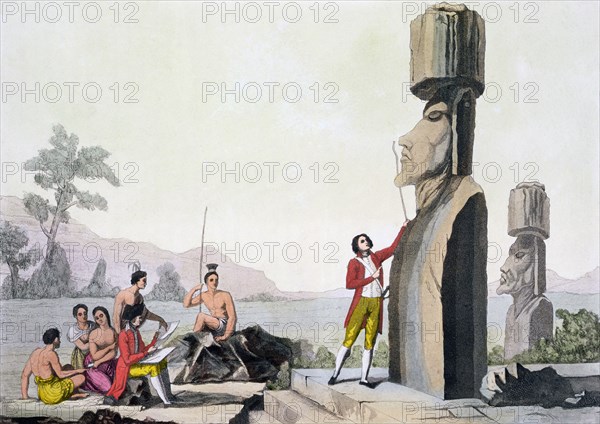
Sujet
Statues on Easter Island, late 18th century. Artist: C Bottigella
Légende
Statues on Easter Island, late 18th century. Known as Moai, these large stone statues in human form are carved from a type of volcanic rock known as tuff. The statues were carved at a quarry on the island between c1000 and 1600 and transported some distance to the sites where they were to stand. The cult of carving Moai seems to have been abandoned quite abruptly as many of the figures, both finished and unfinished, remain in the quarry. The population of Easter Island declined from the 14th or 15th century, possibly due to the environmental consequences of deforestation, which led to soil erosion and meant that the inhabitants no longer had the material to build fishing boats. War, disease and the consequences of contact with Europeans from the early 18th century accelerated the decline and today the islanders' ancient culture is forgotten and the significance of the mysterious Moai within it is uncertain. From an account of Captain James Cook's visit to the island in 1774.
Historica Graphica Collection
Crédit
Photo12/Heritage Images/Historica Graphica Collection
Notre référence
HRM19D59_179
Model release
Non
Licence
Droits gérés
Format disponible
50,1Mo (3,4Mo) / 42,1cm x 29,8cm / 4976 x 3520 (300dpi)